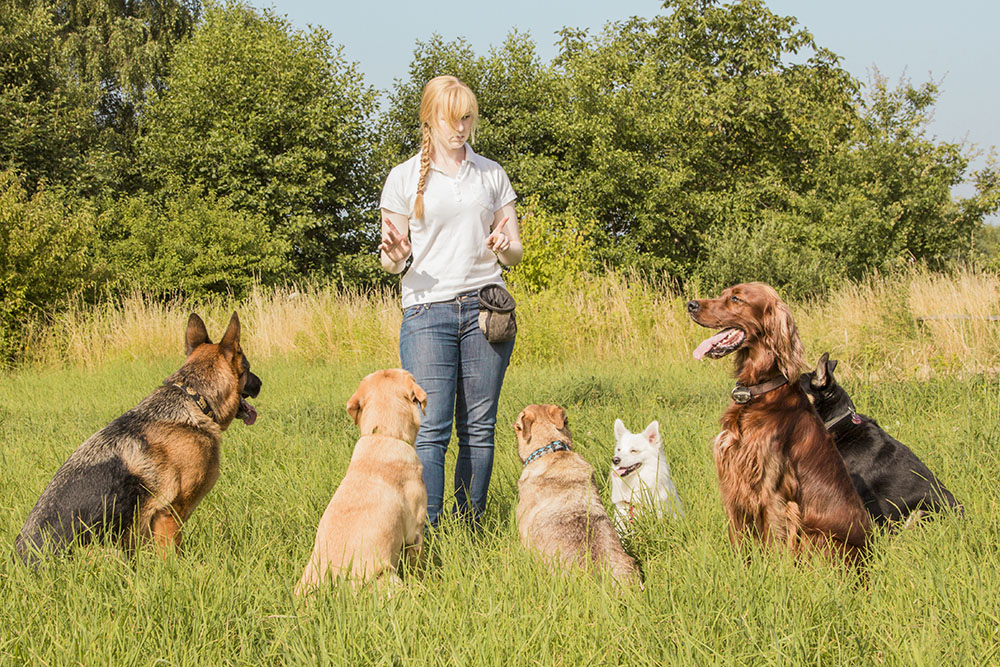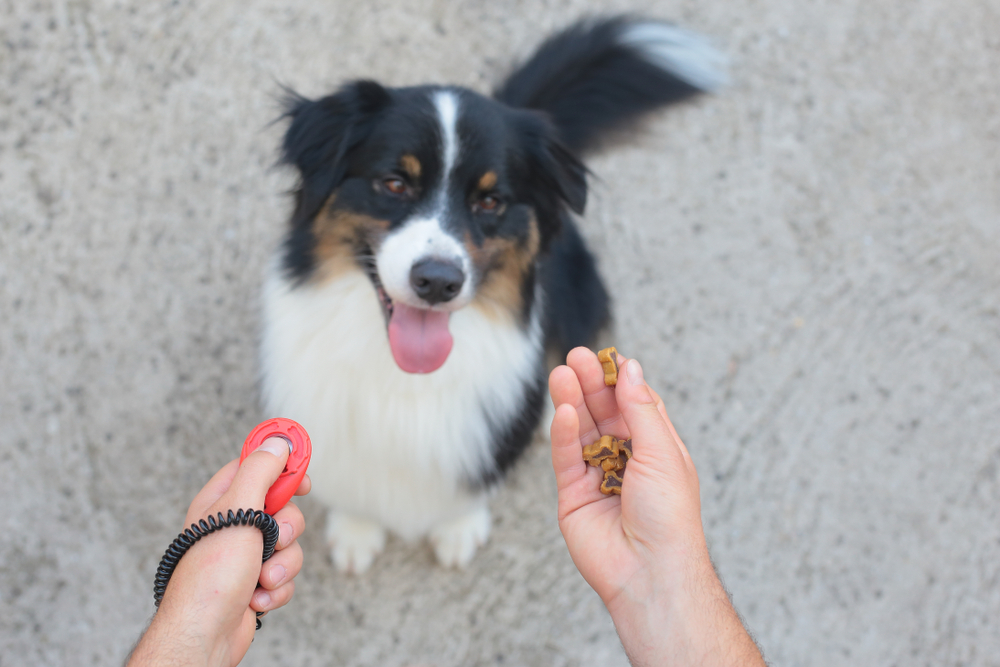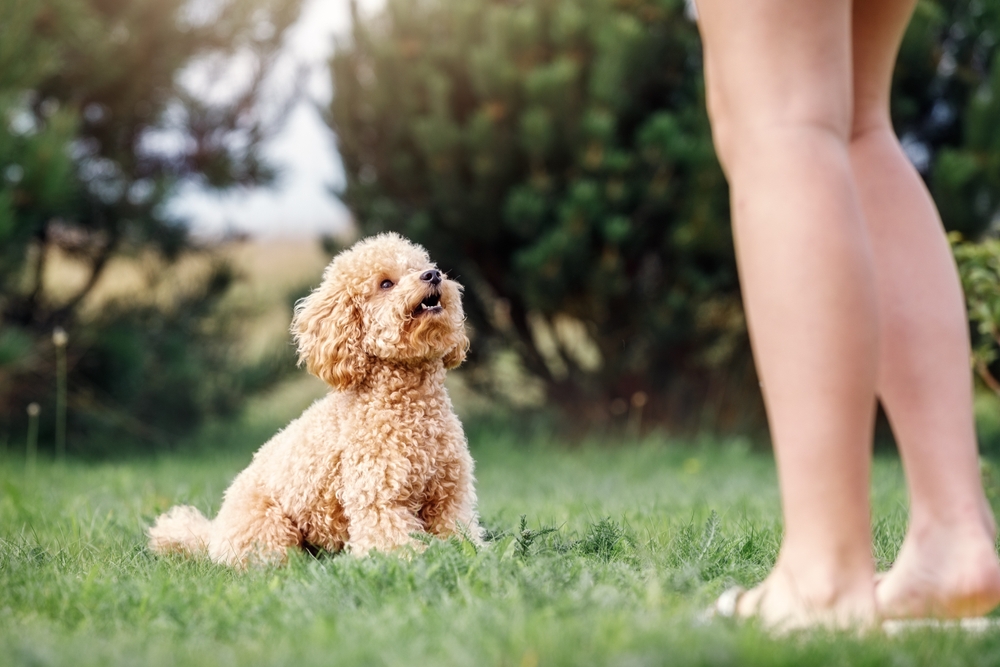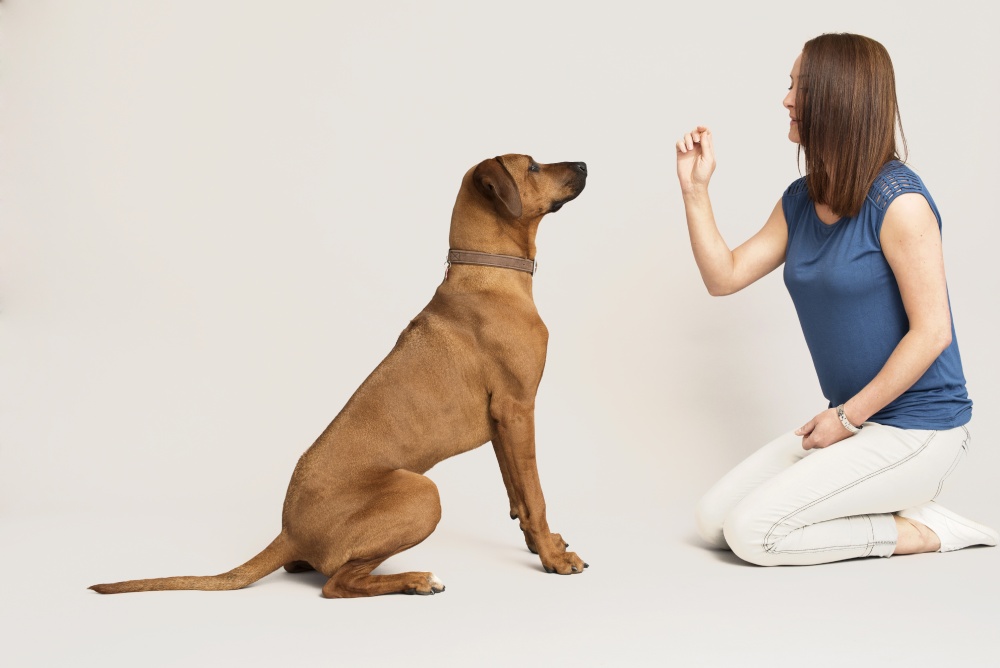Click to Skip Ahead
One of the first things that you want to teach your new puppy (or older rescue) is to sit when you give them the cue to do so. Fortunately, the sit command is one of the easiest things to teach a dog, young or old. The problem is that if you don’t know how to do it, the process can be overwhelming and frustrating. If you’re interested in learning how to teach your dog to sit without hassle, read on!
Before You Begin
Make sure that you’re in the right frame of mind and that you have everything that you need before the training session begins, whether you’re teaching the sit command or anything else. Ensure that you’re in a positive mood and that you have the patience to go through 15 minutes of training without frustration, no matter what happens. Keep in mind that training is a learning experience for your dog and that they can’t be expected to perform with perfection.
You should also make sure you have plenty of treats in your hand or pocket—enough for one treat per repetition—as these’ll act as rewards and encouragement. Finally, prepare a quiet space that’s free of distractions for the upcoming training session to take place in. The fewer things that distract your dog, the more they can focus on the task at hand, which is learning how to sit and be still.

The 6 Steps for Teaching Your Dog to Sit
1. Present the Treat
Start by standing right in front of your dog, then hold a treat in your hand, and let the pup sniff it to understand what’s up for grabs. This will give them the idea that they need to work for that treat in some way, which helps set the stage.
2. Move Your Hand
With the treat in your hand so your dog can see it, slowly raise your hand upward and over their head, then toward their back end. This should trigger them to look up and back and while doing so, to sit their bottom on the ground.
3. Consider Clicker Training
As soon as your dog sits, praise them, and reward them with that treat that’s in your hand. You can also use a clicker at the same time and transition to clicker training if you prefer not to use treats. However, keep in mind that treats are a surefire way to get results without needing clicker or training experience.

4. Repeat
Get your dog to stand up again by backing away from them or tossing a toy for them to fetch, then start the process of getting them to sit with a treat (or clicker) again. Repeat this process a few times per training session.
5. Introduce a Cue
Once your dog reliably sits with treats, cut down on the treats, and offer them every other time they sit while using only verbal praise the other times. After they master sitting without the need for treat encouragement, start using the word “sit” every time you practice the sitting movement just like when you had a treat in your hand. Your empty-handed movement will become the visual cue to sit, while your verbal cue will be the word “sit.”
6. Practice the Verbal Command
After your dog reliably sits with your verbal and visual hand commands, you can start practicing with just the verbal command. After a while, your pup should sit anytime you tell them to without any hand signals or treats.

Training Tips
There are a few tips that can help make the process of training your dog to sit easier and more effective overall.
- Never physically push your dog’s butt to the ground. This action can confuse and even intimidate them and result in having the opposite effect than you were hoping for.
- Utilize treats as long as necessary to train your pup to sit. If you stop using treats too soon, it can cause training sessions to lag in terms of results. Keep in mind that it can take a while for your pup to get the command down.
- You can teach your dog to sit from a lying position if it’s tough doing it the other way. Just use the same tactics as when they are standing, and they should naturally sit up from a lying position to get closer to that treat.
- Reward your dog anytime they sit down, even when you are not asking them to. Every time you catch them sitting, tell them that they’re a good dog and give them a quick head rub. This action will help reinforce the behavior so they’re more likely to choose a sitting position rather than a rambunctious stance in active situations.
Frequently Asked Questions
Can Dogs Be Taught to Sit Without Treats?
Yes, it is possible to teach a dog to sit without the help of treats or other accessories like clickers. It just might take more time, patience, and commitment. Just follow the same training techniques but without the treats.
Can Older Dogs Learn to Sit?
Absolutely! Dogs of all ages can learn how to sit, as long as they can actually do so without discomfort due to problems like hip dysplasia and arthritis. It just might take extra time for adults and older dogs to learn.
What’s So Important About Teaching a Dog to Sit?
There are a few important reasons to teach your dog how to sit upon command. First, ensure that they can stay calm in social situations. If the atmosphere is loud and rambunctious, sitting is much preferred to your dog jumping around and being unmanageable. Second, you can create a sense of pack leadership. Your dog should always know who is in charge. Finally, sitting is important for everything from mealtime and bathtime to bedtime and quiet time while the kids do their homework.

Conclusion
Teaching your dog to sit takes time and patience, but the result is well worth it. Once you get started, stick with the training process, making sure to incorporate at least a short session daily until you get the results that you want.
Featured Image Credit: Linas T, Shutterstock












